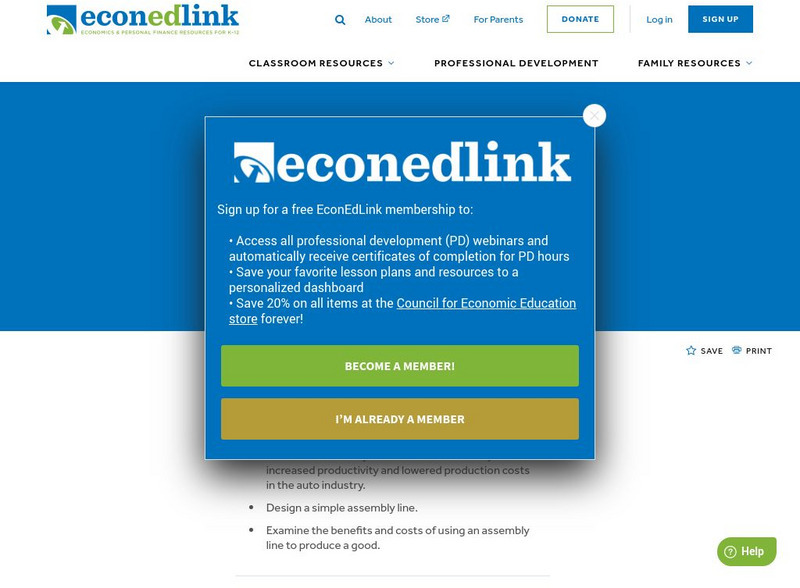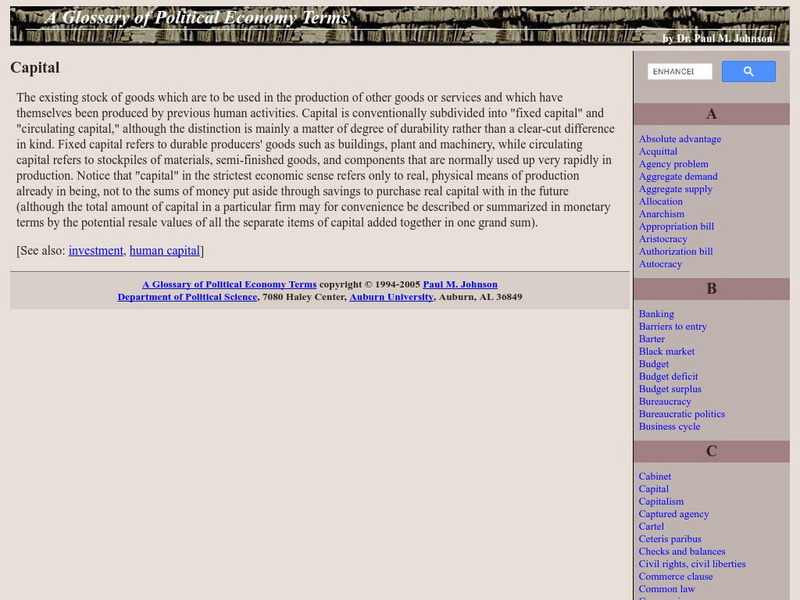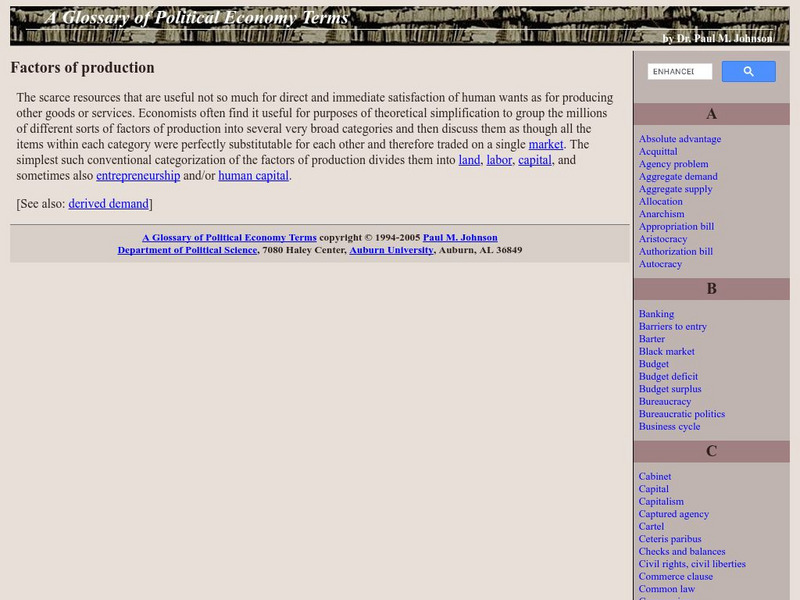Hi, what do you want to do?
Council for Economic Education
Econ Ed Link: Inventors and Innovators Improve on the Original
This lesson plan focuses on discussion of inventions, brainstorming new products or improvements, and identifying the protection, production, and marketing processes.
Council for Economic Education
Econ Ed Link: How Labor Got Its Day
If you asked students what comes to mind first when they think of Labor Day, what do you think they would say? The last days of summer? A family picnic? Shopping the Labor Day sales? The purpose of this lesson is to broaden and deepen...
Council for Economic Education
Econ Ed Link: The Write Stuff
Right now you are probably using a pencil to do your school work. But do you know where the pencil came from, or how it is made? Did you know that the Star Spangled Banner, written by Francis Scott Key was first written in pencil? And...
Council for Economic Education
Econ Ed Link: The Price of Gasoline: What's Behind It?
In this lesson plan, middle schoolers investigate the variables that contribute to the cost of gasoline. They learn that while OPEC nations do influence the price of oil and thus the price of gasoline, other factors also influence the...
Council for Economic Education
Econ Ed Link: Capital Chips (Part 3)
Through the use of a historical timeline of the capital investments made by the company the resulting benefits will be examined. The benefits from the capital investments of Herr Foods, Inc. will be related to their effect on the...
Council for Economic Education
Econ Ed Link: Capital Chips (Part 2)
Through the use of a historical timeline of the capital investments made by the company the resulting benefits will be examined. The benefits from the capital investments of Herr Foods, Inc. will be related to their effect on the...
Council for Economic Education
Econ Ed Link: Capital Chips (Part 1)
Through the use of a historical timeline of the capital investments made by the company the resulting benefits will be examined. The benefits from the capital investments of Herr Foods, Inc. will be related to their effect on the...
Council for Economic Education
Econ Ed Link: Increasing Productivity
This instructional activity stimulates students' thinking with stories about rigorous athlete training illustrating the importance of training and practice. After students read the story, they will experiment to see how instruction and...
Federal Reserve Bank
Federal Reserve Bank of Philadelphia: Ten Mile Day [Pdf]
Using the book, Ten Mile Day, by Mary Ann Fraser, this lesson helps children understand division of labor, competition, and incentives in the workplace.
Council for Economic Education
Econ Ed Link: Those Golden Jeans
Check out this informative economics lesson plan designed to review the three productive resources--natural resources, human resources, and capital resources--needed to produce goods and services.
Council for Economic Education
Econ Ed Link: Widget Production: Producing More Using Less
Through this economics lesson you will learn about widget production. One of the tasks is to see how productivity can help solve problems.
Council for Economic Education
Econ Ed Link: Economic Spotter: Resources During Wwii
This is a lesson that deals with scarcity during WWII. Natural, human, and capital resources are discussed.
Council for Economic Education
Econ Ed Link: Henry Ford and the Model T: A Case Study in Productivity (Part 2)
Henry Ford's use of mass production strategies to manufacture the Model T revolutionized industrial manufacturing. This 3-part learning unit provides students with the story of Henry Ford and the Model T from an economics perspective....
Council for Economic Education
Econ Ed Link: Henry Ford and the Model T: A Case Study in Productivity (Part 1)
Henry Ford's use of mass production strategies to manufacture the Model T revolutionized industrial manufacturing. This 3-part learning unit provides students with the story of Henry Ford and the Model T from an economics perspective....
Practical Money Skills
Practical Money Skills: Market Economy
In a market economy, the principles of supply and demand determine what is produced, how it is produced, and by whom it is produced and consumed. Learn how planned economies and mixed economies differ.
Khan Academy
Khan Academy: The Expenditure Output, or Keynesian Cross, Model
Use a diagram to analyze the relationship between aggregate expenditure and economic output in the Keynesian model.
Khan Academy
Khan Academy: Long Run Production Costs
Practice what you have learned about long-run production costs and the relationship between the long-run average total cost curve and economies of scale, diseconomies of scale, and minimum efficient scale in this exercise.
Auburn University
Auburn University: Glossary of Political Economy Terms: Capital
This Auburn University site has a definition for capital as an economist would use the term.
Other
Seven Ways to Reduce Your Inventory
Provides a method for inventory reduction. Seven tips and their explanation are presented.
Other
Berklee.com: Composition Major
This site gives details to what a composer, an arranger, and a conductor really do. Includes other related careers as well.
Other
Economic Reasons for the Collapse of the Soviet Union
This complicated essay describes the fall of the Soviet Union in economic terms, with an emphasis on the lack of production.
Auburn University
Auburn University: Glossary of Political Economy Terms: Factors of Production
This Auburn University site has a detailed definition for factors of production.
Curated OER
Productivity Conceptual Model
This site provides a conceptual map based on business organization and productivity.
Curated OER
Monopolistically Competitive Firm in Long Run Equilibrium
This site uses interactive graphs to show how changes in demand would change a firm's output, price, and profits or losses in a monopolistically competitive market structure.


















